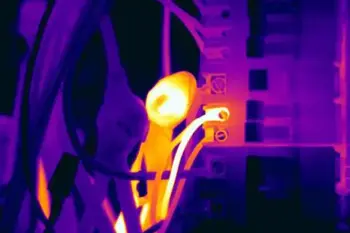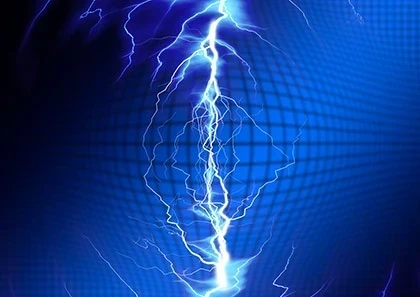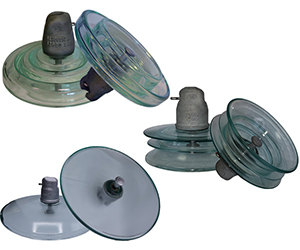Software and Apps

5 Levels of PLC Proficiency
PLC proficiency drives industrial automation excellence with Programmable Logic Controllers, ladder logic, IEC 61131-3 languages, HMI/SCADA integration, I/O troubleshooting, safety circuits, PID tuning, and networked control for reliable, maintainable, and scalable electrical engineering systems.
What Is PLC Proficiency?
PLC proficiency is the ability to design, program, and maintain reliable industrial control systems.
✅ Master IEC 61131-3 languages: ladder, function block, structured text.
✅ Integrate PLCs with HMI/SCADA, VFDs, sensors, and safety relays.
✅ Diagnose I/O, networks, and motion; validate with P&IDs and FAT/SAT.
Ladder logic, a programming language used to primarily develop PLC software, was made for use in early PLCs because the symbology was similar to the printed ladder schematics already used to document relay control systems, so the transition to PLCs could be familiar and seamless. After all, electricians had to be the first ones to buy in to these newfangled computerized systems. But, since those early days, a lot has happened with computers and PLC control systems and they can be considerably more complex. For readers bridging from electrical practice to modern controls, the electrical engineering training resources can contextualize PLC concepts alongside broader power fundamentals.
Today’s PLCs are far more powerful, flexible and typically involve various levels of networking. They can handle multiple simultaneous programming languages, each of which has its own suitability for any situation. Many systems can handle motion control, process control and information processing, which provides more flexibility. But with all this power, you can wrap yourself around a tree without proper knowledge and planning. Now find your PLC proficiency level. In transportation and civic infrastructure, projects like smart city automated level crossings exemplify how integrated PLCs, sensors, and networks raise both safety and throughput.
1. MAINTENANCE LEVEL
The first level of PLC proficiency, the maintenance level, includes knowing how to get online, knowing how to backup and restore a program (as well as when and when not to do so), knowing how to troubleshoot from the panel lights as a first step, how to interpret basic ladder symbology and real-time states and how to properly diagnose and replace faulty hardware components. A lack of true proficiency at this level can lead to shotgun troubleshooting that could just lead to more problems. Building this baseline is supported by industrial electrical maintenance tools and best practices that reinforce disciplined troubleshooting and documentation.
2. PROGRAM MODIFICATION LEVEL
The next proficiency level is the ability to make simple program modifications. This is a dangerous level even because you can make simple programming mistakes easily. It can be exhilarating to make program tweaks and improve a process. But the fatal flaw is that, at this level, a worker assigned a PLCs project might not know enough to solve an important problem, which can cost companies valuable time and money. For example, one manager assigned a rather small PLC controls project to an electrician who had shown great promise by reason of his ability to tweak other PLC programs. After six months, the project still wasn’t done. What he had done wasn’t working properly, and the electrician was completely overwhelmed. A pro came in and rewrote it in under a day. Before attempting changes in production, targeted PLC training courses can help practitioners learn safe methods, version control, and rollback strategies.
3. PROGRAM DEVELOPMENT LEVEL
This brings us to the third level which is the ability to develop smaller programs involving a single processor. The trick here is proper planning. The neophyte thinks PLC programming is all done at the keyboard—that’s actually the last step. Successful PLC programming is all done on paper first. The keyboard part is merely a data entry step. The exception is sometimes you need to test concepts. In other words, sometimes trial by error using the manual is easier—as long as you are disciplined enough to document your steps on paper.
Proper paper planning has many steps including gathering and documenting requirements, documenting all devices in a device layout drawing, evaluation of scan-time, determining throughput and memory requirements, selecting hardware and assigning input/output (I/O), generating electrical drawings, identifying logical control sequences in a reiterative process that results in simplification, making memory and routine assignments, writing code on paper, and then entering the data into the computer. I’ve written massive programs on paper which I had
a secretary enter using PLC programming software even though she knew nothing about PLCs. She even found some of my errors because she could recognize patterns. So, the last step, sitting at the keyboard, is often mistaken as the first step. During planning, confirm fieldbus and Ethernet requirements using industrial automation communication guidelines so addressing, bandwidth, and diagnostics are considered upfront.
Sitting at the keyboard is fun compared to paperwork and planning. But, if you’re going to be successful and productive thus finishing the project in a timely fashion, then this method is the most efficient way. Even in the one-day rewrite mentioned above, all these steps were done. As I mentioned, the project was small, so each step was done with rapidity, but they were done none the less.
4. COMPLEX PROGRAM DEVELOPMENT LEVEL
The fourth level involves developing large, complex PLC programs for single processor systems and usually distributed I/O. The discipline of the third level is an absolute must, but there is an exceptional amount of know how added to that which is beyond the scope of this article
Complex cells often intersect with protection systems, where integrating PLC logic with complex protective relays demands rigorous coordination studies and change management.
5. SYSTEM ARCHITECTURE LEVEL
The fifth level, the system architecture level, involves integrating multiple disparate systems together and involves network communications. Layering in HMI, SCADA and MES systems with PLCs and doing it right is a very high skill. What is important to know though is that these separate levels do exist and they are learnable. I have personally walked into troubleshooting scenarios which were confounding only because new problems were created on top of the original ones. This can be avoided by becoming PLC proficient at least on the first level and recognizing what you know and what you don’t. Architects benefit from mapping devices and data flows to the hierarchical levels of industrial networks to clarify segmentation, determinism, and security zones.
Related Articles
Download Our FREE Arc Flash Handbook

Electrical Safety and Arc Flash Handbook Vol. 3
Our third volume on Electrical Safety and Arc Flash directly addresses the industry-wide call for the most up to date information on arc flash prevention, mitigation and injury prevention.
Latest Software and Apps Articles

Thermography - 101
Thermography uses infrared imaging for non-contact thermal scanning, revealing hotspots in electrical panels, switchgear, and power distribution. It supports predictive maintenance, fault detection, and condition monitoring, reducing downtime and improving safety.
What Is Thermography?
Thermography is infrared thermal imaging used to detect electrical hotspots for predictive maintenance and safety.
✅ Identifies overloaded circuits, loose connections, and phase imbalance
✅ Enables non-destructive testing and condition-based maintenance
✅ Minimizes arc-flash risk and unplanned outages via early detection
Thermography used to be expensive, difficult, and primarily used by large industrial facilities and the military. These days, it has become much more affordable, easier to use, and more broadly applied. Beyond industrial uses, facilities implementing load management often pair thermographic monitoring with thermal energy storage to optimize HVAC performance and reduce peak demand.
A thermal imager works by producing thermal (heat) pictures of the equipment. Electrical contractors typically use thermal imagers for predictive maintenance and troubleshooting, and sometimes during installation. For predictive maintenance, the contractor takes thermal images of key units (panels, drives, and motors) at least once a year if not more often, and compares those images with each visit. Hot or cold spots that were not previously evident may indicate problems that need to be investigated before they cause failure. For transformer assets, routine scans are complemented by checking inspection windows on transformers for evidence of overheating or contamination.
For troubleshooting, a thermal image of a malfunctioning unit can often identify the source of the problem—electrical hotspots reveal which phase or connectors to check, and motor hotspots can narrow it down to bearing and windings. Following repairs, follow up with another thermal image and verify that the component is no longer overheating or that something else is not now overheating, instead. When insulation breakdown is suspected, pairing thermography with an insulation resistance tester can quickly confirm dielectric health before re-energizing circuits.
Today’s thermal imagers are compact and easy to use. For example, some thermal imagers include features that fuse a visual or visible light image with an infrared photo for better identification, analysis, and image management. To capture a specific thermal image, in most cases, simply squeeze the trigger. When work is completed, upload the images to the included software, analyze them more closely, and create reports documenting any findings. The dual images are accurately aligned heightening details, making it much easier to spot where further investigation is needed. Some teams also use acoustic imaging for partial discharge to pinpoint defects that may not present a clear thermal signature.
EMISSIVITY
When a technician reads surface temperature, he/she is actually measuring the infrared energy emitted by that object. The emissivity of a material determines how efficiently the surface emits energy. The typical emissivity of most organic materials and painted surfaces is about
0.95. However, certain materials, such as concrete and metals, are poorer emitters—their emitted energy does not accurately reflect their real surface temperature. The emissivity and reflected temperature values in the imager can be adjusted for accuracy to obtain thermal measurements of less efficient emitters. However, as emissivity values drop, more care will be needed and values below about 0.6 may be difficult in the field. To corroborate findings on reflective metals, technicians often validate cable and motor insulation with a megohmmeter so thermographic anomalies are interpreted in the proper context.
Emissivity values for many materials are published in charts and can be used as a guide. Ideally, measure the temperature of an object with a contact thermometer then adjust the emissivity of the imager for the same reading. Then, the technician knows the emissivity for future measurements. Understanding material properties also informs electrical testing choices, and resources that detail insulation resistance explained can help correlate thermal patterns with insulation integrity.
LEVEL AND SPAN
When the image includes a wide range of temperatures, level and span adjustments can help technicians focus on the most important temperatures. Most users work in automatic mode where the thermal imager automatically assigns a temperature range based on the thermal scene in the viewfinder. If the imager senses a range from 80 degrees to 120 degrees, the camera will automatically adjust the temperature range to show that range.
If, however, the technician looks at a scene in automatic mode with a cooler object in the foreground and a hotter object of no interest in the background, the color palette will be spread across a wide range of temperatures and the resolution of the actual area of interest will be poor. In such cases, the technician can manually adjust the level and span to better view just the hot or cool object.
SOFTWARE
The technician will usually need software with any purchased thermal imager, so here are the key points to consider:
- Is the software included in the price?
- Are future updates free of charge as well?
- Does the company have to buy licenses for multiple team members to load it?
- Does it easily create good-looking report?
For compliance and risk reduction, many organizations integrate reporting with arc flash assessment software to maintain up-to-date labels and mitigation plans.
Related Articles
Software and Apps Media
Software and Apps Articles From ET Magazine

FERC Complaint Targets Duke, PJM Transmission Planning
A coalition of large energy consumers and ratepayer advocates has filed a complaint with the Federal Energy Regulatory Commission (FERC), urging the agency to prohibit transmission owners from independently planning "local" transmission projects exceeding 100 kilovolts (kV). The coalition argues that such local planning, lacking independent oversight, leads to inefficient and costly transmission development, resulting in unjust and unreasonable rates for consumers.
Background
Transmission planning involves determining the necessary infrastructure to transport electricity from generation sources to consumers. In the United States, this planning is typically conducted by transmission owners, which are often investor-owned utilities. These entities are responsible for identifying and implementing transmission projects to meet local reliability needs. However, the coalition contends that this approach can result in projects that are not cost-effective and may not represent the most efficient solutions for consumers.
The Complaint
The coalition's complaint highlights several concerns:
-
Lack of Independent Review: Local transmission projects often undergo minimal independent scrutiny, leading to potential inefficiencies and higher costs.
-
Incentives for Overinvestment: Transmission owners may be motivated to invest in local projects due to the absence of competitive bidding and the limited review provided by FERC's formula rate process.
-
Regional Planning Deficiencies: The current regulatory framework allows local planning exceptions to override regional planning rules, hindering the development of more efficient regional solutions.
The coalition proposes that FERC mandate regional planning conducted by an independent transmission system planner to ensure that transmission projects are both appropriate and beneficial to consumers. They suggest that regional transmission organizations and independent system operators could serve as independent transmission planners if they meet specific criteria.
Industry Response
Larry Gasteiger, executive director of WIRES—a transmission sector advocacy group—expressed concerns about the potential impact of the complaint. He stated that the complaint could burden FERC and all transmission developers with unnecessary and inefficient new processes, diverting resources from ongoing regional transmission planning and compliance with existing FERC orders.
Regulatory Context
This complaint follows recent developments in transmission planning and oversight:
-
FERC's Order 1920-A: In November 2024, FERC revised its Order 1920 on transmission planning and cost allocation to grant state utility regulators a larger role in the decision-making process. The revised rule requires transmission providers to include state input on the development of future scenarios used in long-term regional transmission planning.
-
FERC's Rejection of PJM's Proposal: In December 2024, FERC rejected proposals that would have given PJM Interconnection transmission owners more control over the grid operator’s transmission planning process. The commission expressed concerns about the potential for undue influence by a single stakeholder group, specifically the PJM transmission owners, over transmission planning and expansion.
Implications
The coalition's complaint underscores ongoing debates about the effectiveness and fairness of transmission planning processes. Proponents of independent planning argue that it can lead to more efficient and cost-effective transmission solutions, ultimately benefiting consumers. Opponents, however, caution that such changes could introduce new complexities and delays into the transmission development process.
As FERC reviews the complaint, stakeholders across the energy sector will be closely monitoring the potential implications for transmission planning and the broader regulatory landscape.

RWE Expands Its Footprint with 450 MW of Battery Energy Storage in Texas
In a significant move for the renewable energy landscape, RWE, a leading global energy company, has announced the addition of 450 megawatts (MW) of battery energy storage capacity in Texas. This expansion underscores the growing importance of energy storage solutions in enhancing grid reliability and supporting the integration of renewable energy sources. As the demand for clean energy continues to rise, RWE's investment reflects a broader trend in the energy sector toward more resilient and flexible systems.
The Role of Battery Energy Storage
Battery energy storage systems (BESS) play a critical role in modernizing the electrical grid. They offer several advantages, including the ability to store excess energy generated from renewable sources like solar and wind for later use. This capability helps balance supply and demand, especially during peak consumption periods when renewable generation may be insufficient.
In Texas, where the energy landscape is increasingly dominated by renewables, the need for robust energy storage solutions has never been more crucial. The state has experienced significant growth in wind and solar energy installations, yet the intermittent nature of these sources presents challenges. Battery storage systems can help mitigate these challenges by providing backup power, enhancing grid stability, and enabling more efficient energy management.
RWE's Strategic Investment
RWE's new battery storage facility in Texas is part of its broader strategy to expand its renewable energy portfolio and enhance energy security in the region. The company aims to invest significantly in renewable energy and storage technologies, recognizing their essential role in achieving global climate goals and facilitating the transition to a sustainable energy future.
The 450 MW battery storage capacity is expected to provide vital grid services, including frequency regulation and load shifting. By storing energy during periods of low demand and discharging it during peak times, the facility will help stabilize the grid and reduce reliance on fossil fuel-powered generation.
RWE’s investment aligns with Texas’ ambitious energy goals, particularly in promoting renewable energy. The state has set a target of achieving 20,000 MW of battery storage capacity by 2030, which represents a critical step in integrating more renewable energy into the grid. RWE’s contribution will be a valuable asset in helping Texas reach these targets.
Benefits for the Texas Energy Market
The addition of 450 MW of battery storage capacity is poised to have several positive impacts on the Texas energy market:
-
Enhanced Grid Reliability: The new facility will provide crucial support to the grid, ensuring that energy supply remains stable even as renewable energy sources fluctuate. This reliability is especially important during peak demand periods, such as extreme weather events.
-
Increased Renewable Integration: By enabling more efficient use of renewable energy, the battery storage system will help reduce the reliance on fossil fuels. This is critical for Texas, which aims to lower greenhouse gas emissions and transition toward a cleaner energy mix.
-
Economic Growth: RWE’s investment in battery storage represents a significant capital infusion into the Texas economy. This project is expected to create jobs during the construction phase and in ongoing operations and maintenance, contributing to local economic development.
-
Market Flexibility: With the ability to store energy for later use, battery storage systems enhance the flexibility of the energy market. This flexibility allows for better management of energy resources and can lead to more competitive pricing for consumers.
Challenges Ahead
Despite the promising benefits, the deployment of battery energy storage systems is not without challenges. Issues such as supply chain constraints for battery materials, regulatory hurdles, and the need for supportive policies can impact the pace of development.
Additionally, as the demand for battery storage grows, ensuring the sustainability of battery production and recycling will be crucial. The industry must focus on developing environmentally friendly practices to mitigate any negative impacts associated with increased battery use.
Conclusion
RWE’s addition of 450 MW of battery energy storage in Texas marks a significant step forward in the ongoing transition to a more resilient and sustainable energy system. By investing in energy storage solutions, RWE is not only enhancing grid reliability but also supporting the broader integration of renewable energy sources in a state that is rapidly evolving its energy landscape.
As the world moves towards a greener future, investments like RWE’s will be essential in meeting the challenges of energy supply and demand. The success of such projects will demonstrate the vital role that battery storage can play in shaping a sustainable energy future, benefiting consumers, the economy, and the environment.

Digital Twins for Substations: Bridging the Physical and Digital Worlds
In the rapidly evolving landscape of power grid management, digital twin technology is emerging as a game-changer for substations. By creating virtual replicas of physical assets, digital twins bridge the gap between the physical and digital worlds, enabling enhanced operational efficiency and asset management. This article examines the application of digital twin technology in substations, its benefits for real-time monitoring, scenario analysis, and predictive maintenance, integration with grid management systems and IoT devices, and examples of successful implementations and their impact on substation performance.
Discover how modern substations are evolving through virtualization, process bus systems, and advanced cybersecurity in our digital substation feature article.
Overview of Digital Twin Technology and Its Application in Substations
A digital twin is a dynamic, virtual model of a physical asset, system, or process that mirrors its real-time status, operation, and performance. In the context of substations, digital twins replicate components such as transformers, circuit breakers, and control systems. These virtual models are continuously updated with data from sensors, IoT devices, and other sources, providing a comprehensive and dynamic view of the physical infrastructure. Accurate modeling is only possible with integrated substation automation systems that track real-time operational data.
Digital twin technology allows utilities to simulate, analyze, and optimize substation operations. It provides a detailed and real-time representation of the substation’s performance, enabling operators to monitor equipment health, predict potential issues, and evaluate different scenarios to improve decision-making and operational efficiency. The design phase is critical, and effective electrical substation design supports digital twin integration.
Benefits of Using Digital Twins for Real-Time Monitoring, Scenario Analysis, and Predictive Maintenance
Real-Time Monitoring
Digital twins offer real-time visibility into the performance and condition of substation assets. By continuously collecting and analyzing data, digital twins enable utilities to monitor key parameters such as voltage, current, temperature, and load. This real-time insight helps identify anomalies and potential failures before they escalate, allowing for timely intervention and minimizing downtime. To ensure accuracy over time, a digital twin must be continually updated through reliable electrical substation maintenance practices.
Scenario Analysis
Digital twins enable utilities to perform scenario analysis by simulating different operational conditions and assessing their impact on substation performance. This capability is invaluable for planning and decision-making, as it allows utilities to evaluate the effects of load changes, equipment upgrades, and environmental factors. Scenario analysis helps utilities develop robust strategies for grid optimization, emergency response, and future investments.
Predictive Maintenance
One of the most significant advantages of digital twins is their ability to facilitate predictive maintenance. By analyzing historical and real-time data, digital twins can identify patterns and trends that indicate potential issues. This predictive capability allows utilities to schedule maintenance activities proactively, reducing the likelihood of unexpected failures and extending the lifespan of substation assets. Predictive maintenance also optimizes resource allocation and reduces maintenance costs.
Integration with Grid Management Systems and IoT Devices
The integration of digital twins with existing grid management systems and Internet of Things (IoT) devices is essential for maximizing their benefits. Digital twins complement grid management systems by providing a more detailed and dynamic view of substation infrastructure. While traditional systems offer real-time monitoring and control, digital twins enhance these capabilities with advanced analytics, simulation, and predictive insights.
Understanding the inner workings of electrical substation components allows engineers to replicate them digitally with precision.
You can also visit our Substation Maintenance training course.
Visit our Electricity Forum Electrical Substation Channel Page.
Read full article at Intelligent Transformers & Substations Special Edition

FirstEnergy Explores Alternatives to PJM Capacity Market
In a strategic move aimed at enhancing its power supply reliability, FirstEnergy is actively exploring alternatives to the PJM capacity market. This development reflects the company’s proactive approach to addressing challenges within the existing market structure and ensuring a more robust and resilient energy supply for its customers.
Understanding the PJM Capacity Market
The PJM capacity market, administered by PJM Interconnection, is a critical component of the region’s electricity market, which spans parts of the eastern United States. This market is designed to ensure that there is sufficient power generation capacity available to meet future electricity demand. Utilities and power generators participate in the capacity market by offering to provide electricity or reserve capacity during peak demand periods.
Under this system, companies like FirstEnergy commit to having adequate power resources available when needed, receiving compensation for this readiness. While the PJM capacity market has been instrumental in maintaining grid reliability and encouraging investment in new generation resources, it has faced criticism and challenges over the years, including concerns about its effectiveness in supporting new investments and adapting to changing market conditions.
FirstEnergy’s Strategic Shift
FirstEnergy, a major electric utility serving millions of customers across the Midwest and Mid-Atlantic regions, has been evaluating the effectiveness of the PJM capacity market in meeting its needs. The company has raised concerns that the current market structure may not fully address its challenges related to power supply reliability and investment in new resources.
In response, FirstEnergy is seeking alternatives to the PJM capacity market that could better align with its operational goals and the evolving dynamics of the energy sector. These alternatives could include new market mechanisms, partnerships, or regulatory approaches designed to enhance grid reliability and ensure a stable power supply.
Key Motivations Behind the Move
Several factors are driving FirstEnergy’s exploration of alternatives to the PJM capacity market:
-
Reliability and Resilience: FirstEnergy aims to bolster its ability to provide a reliable and resilient power supply. With increasing instances of extreme weather events and other disruptions, the company seeks solutions that enhance its ability to respond to and recover from potential outages.
-
Investment in New Resources: The existing capacity market structure may not provide adequate incentives for investment in new generation resources or upgrades to existing infrastructure. By exploring alternatives, FirstEnergy hopes to create a more favorable environment for attracting new investments in energy technology and infrastructure.
-
Market Adaptability: The energy sector is undergoing significant transformation with the rise of renewable energy sources and evolving regulatory requirements. FirstEnergy’s evaluation of alternative market structures is aimed at ensuring that its power supply strategies are adaptable to these changes.
-
Cost Efficiency: The company is also focused on identifying market mechanisms that offer better cost efficiency. Alternatives to the PJM capacity market may provide more cost-effective solutions for maintaining grid reliability while minimizing the financial burden on consumers.
Potential Alternatives and Their Implications
Several alternative approaches to the PJM capacity market could be considered by FirstEnergy:
-
Custom Capacity Agreements: FirstEnergy could explore the feasibility of custom capacity agreements that are tailored to its specific needs and operational requirements. These agreements could offer more flexibility and alignment with the company’s power supply goals.
-
Integrated Resource Planning: Adopting an integrated resource planning approach could allow FirstEnergy to better coordinate its investments in generation, transmission, and demand response resources. This approach could enhance overall system efficiency and reliability.
-
Regional Collaborations: Collaborating with other utilities or regional stakeholders to develop new market structures or joint investment initiatives could offer opportunities for shared resources and enhanced grid reliability.
-
Regulatory Advocacy: Engaging with regulators and policymakers to advocate for changes in market design or new policy frameworks could help shape a more effective and supportive market environment for power supply.
Looking Ahead
As FirstEnergy continues to explore alternatives to the PJM capacity market, the company’s efforts will be closely watched by industry stakeholders, regulators, and customers. The outcome of this exploration could have broader implications for the regional electricity market and influence future discussions on market design and grid reliability.
In summary, FirstEnergy’s move to seek alternatives to the PJM capacity market reflects a strategic effort to address evolving challenges in power supply reliability and investment. By evaluating new market mechanisms and exploring innovative solutions, the company aims to strengthen its ability to provide dependable electricity while adapting to the dynamic landscape of the energy sector.
Sign Up for Electricity Forum’s Software and Apps Newsletter
Stay informed with our FREE Software and Apps Newsletter — get the latest news, breakthrough technologies, and expert insights, delivered straight to your inbox.
Electricity Today T&D Magazine Subscribe for FREE

- Timely insights from industry experts
- Practical solutions T&D engineers
- Free access to every issue












